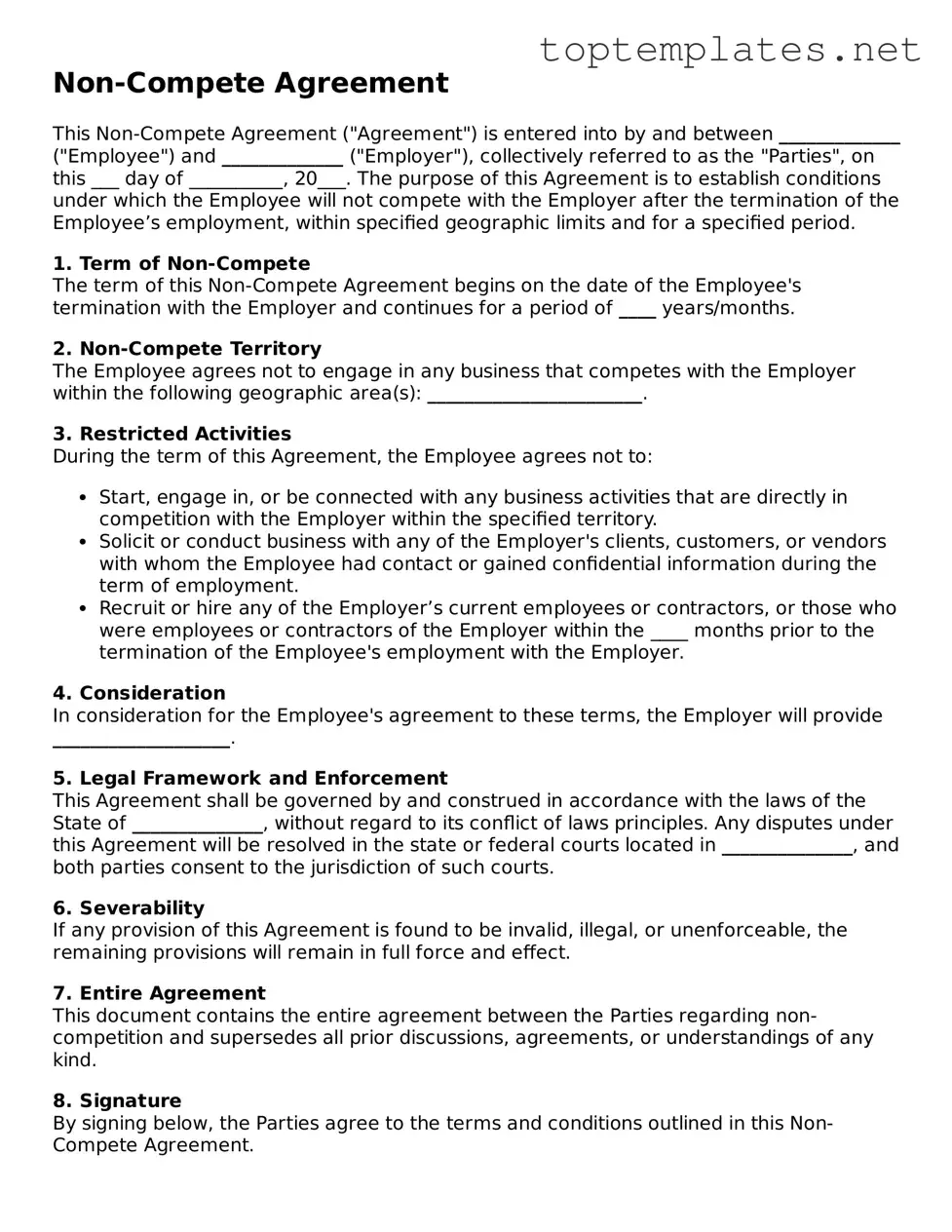What is a Non-compete Agreement?
A Non-compete Agreement is a legal document that prevents an employee from entering into competition with their employer during or after their employment period. It restricts the employee from starting a similar profession or trade in competition against the employer for a certain period within a specified geographic area.
Why do companies use Non-compete Agreements?
Companies use Non-compete Agreements to protect their business interests. These agreements help safeguard sensitive information, including trade secrets, client lists, and business strategies that employees have access to during their employment. By limiting the potential for competition, employers aim to prevent the loss of valuable information and maintain their market position.
Are Non-compete Agreements enforceable in all states?
The enforceability of Non-compete Agreements varies by state. While most states allow them with certain restrictions concerning the duration, geographical area, and scope of the agreement, some states, like California, have strict laws making most non-compete agreements unenforceable, except in specific circumstances. It’s essential to check the state laws where the business operates and where the employee works to understand the enforceability of these agreements.
What makes a Non-compete Agreement legally binding?
For a Non-compete Agreement to be legally binding, it must meet certain criteria: it should serve a legitimate business interest, be reasonable in scope, duration, and geographical area, and provide consideration (something of value) to the employee in exchange for their agreement not to compete. The definition of "reasonable" can vary by case and jurisdiction, making it crucial for the agreement to be carefully crafted to ensure it is enforceable.
Can an existing employee be asked to sign a Non-compete Agreement?
Yes, an employer can ask an existing employee to sign a Non-compete Agreement. However, since the employee is already employed, the employer must provide additional consideration beyond continued employment. This could be in the form of a promotion, bonus, or other benefits that would constitute a fair exchange for agreeing to the non-compete terms.
What happens if an employee breaks a Non-compete Agreement?
If an employee breaches a Non-compete Agreement, the employer may take legal action to enforce the agreement. This can include seeking an injunction to prevent the employee from continuing the competitive activity and suing for monetary damages caused by the breach. The outcome of such legal actions can vary, with courts considering the reasonableness of the non-compete terms and the circumstances of the breach.
Can a Non-compete Agreement be negotiated?
Yes, like any contract, the terms of a Non-compete Agreement can be negotiated before signing. Employees have the right to negotiate the duration, geographic scope, and even the compensation provided in exchange for agreeing to these terms. Effective negotiation can lead to an agreement that balances the employer's need to protect its business with the employee's right to work and earn a living.
